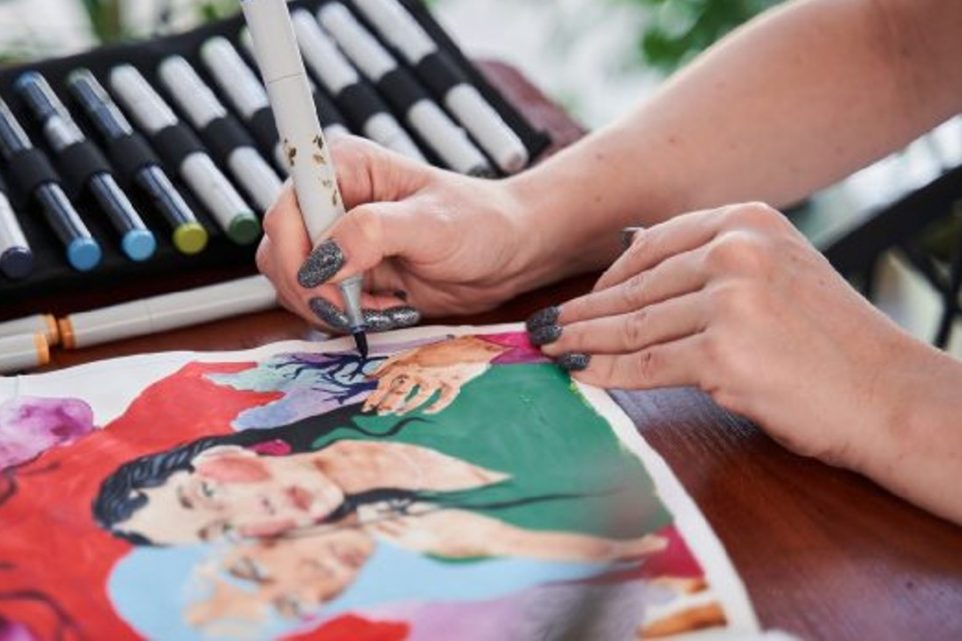Exploring the Benefits of Art and Crafts for Child Development

When it comes to stimulating and encouraging the growth and development of your children, arts and crafts can play a key role. Art and crafts for kids provide a great opportunity for children to tap into their creative side and help them engage with their environment in a meaningful way.
In this post, we’ll explore the benefits that art and crafts can have for child development. We’ll explore the importance of providing children with a creative outlet, the potential for increased self-confidence, and how to encourage your children to explore this creative side of life. If you’re looking for ways to help your children grow and develop, arts and crafts may be the answer.
Benefits of Arts and Crafts
Stimulation of Cognitive Development
Arts and crafts projects can help stimulate cognitive development in children. By solving problems or completing challenges related to the activity, kids can exercise their problem-solving skills, logical thinking, and creative thinking.
Improvement of Emotional Development
Engaging in arts and crafts can also improve emotional development as it helps children gain a sense of accomplishment when completing a project. This process also teaches them patience as they work through difficult tasks and learn how to manage their emotions in the process.
Boost Motor Skills and Coordination
Activities like painting or drawing that involve manipulating small objects can help boost motor skills and coordination in young children. Arts and crafts projects that require fine motor skills can also help develop hand-eye coordination as they learn how to create shapes, patterns, or other shapes. Utilizing different utensils like pencils and felt tip pens or watercolor pencils may also develop writing skills.
Different Types of Arts and Crafts
There are a wide variety of different types of arts and crafts projects your child can take part in depending on their age, interests, or skill level. Here are some popular choices.
Painting and Drawing
Painting and drawing are classic art projects that are ideal for younger children as it teaches them basic color theory and encourages their creative thinking. Simple projects, like finger painting or coloring books, can help get younger kids started with these activities while allowing them to progress at their own pace.
Paper Crafts
Paper crafts are another great option for kids because they don’t require messy materials, like paints or clay, so they’re easy to clean up afterward. Some fun paper craft ideas include origami, paper-cutting designs, or scrapbooking.
Clay and Dough Crafts
Clay or dough crafts are great for kids because they allow them to get messy and think of objects in a 3D setting. Taking part in hands-on activities like this will encourage motor skill development and imaginative play.
Tips for Introducing Arts and Crafts to Young Children
Start with Easy Projects
When introducing your child to arts and crafts, start with simple projects instead of overwhelming them with complex activities. This way, they can learn the basics before diving into more complicated tasks. Look up some beginner tutorials online depending on the craft you’d like your child to try out first.
Gather the Right Supplies
Once you’ve chosen an appropriate project, make sure you have all the necessary supplies ready, such as paints, brushes, and construction paper. Make sure you choose supplies that will be safe for your child’s age. Depending on the kind of craft you chose, you may need additional tools such as scissors, glue sticks, and markers. Educate yourself on what kind of tools would go with your specific project so that your child has everything they need from the start.
Put Safety Rules in Place
Just like any other activity involving small children, safety should always come first. Always supervise play with sharp objects like scissors. Providing guidelines from day one will make sure that everyone involved will remain safe throughout the entire process.
Conclusion
Arts and crafts activities for children provide a great opportunity to help them grow, learn, and express their creativity. There are many benefits to encouraging your child to take part in art and craft activities. With the right supplies, introduction method, and storage place, you can help ensure your children have a positive experience. Let your kids get crafty and watch as their creativity blossoms.
Trusted Insights from Artists
At Art Life Today, our passion for arts and crafts is at the heart of everything we do. We understand that the right tools and materials can make all the difference in your creative projects, so we take our responsibility as reviewers seriously. Our goal is to help you discover the best products that will inspire your creativity and bring your artistic visions to life.